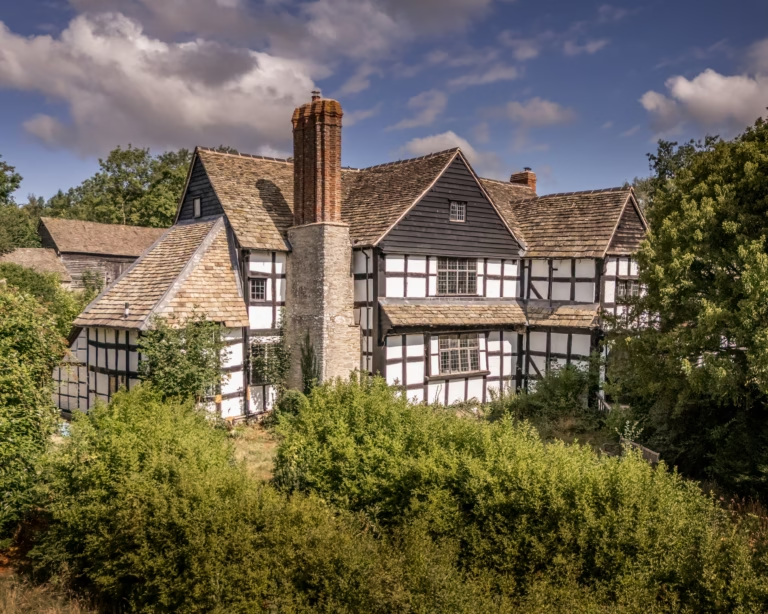Herefordshire has become the perfect stand-in for Stratford-upon-Avon in the new film adaptation of Hamnet. Scouts for the movie found the region’s half-timbered towns, crooked buildings, and welcoming inns ideal for recreating Elizabethan England. The film, based on Maggie O’Farrell’s bestselling 2020 novel, stars Jessie Buckley and Paul Mescal and explores Shakespeare’s life during the plague and the death of his 11-year-old son, Hamnet, in 1596.
Visiting Weobley, the charm of old England is immediate. Ancient churches, stone carvings, and historic tombs create an atmosphere that feels frozen in time. Walking through narrow streets, the timbered buildings seem unchanged for centuries. The town’s pubs, including the Unicorn and Ye Olde Salutation Inn, evoke the taverns of Shakespeare’s era. The crooked architecture and modern chimney additions visible in the structures help film crews craft a believable Elizabethan setting.
A small local museum adds context, showing relics such as a silver sixpence discovered by a metal detectorist. Nearby, the church of St Peter & St Paul offers both history and inspiration. Its 185-foot spire, supported by flying buttresses, reflects Weobley’s former prominence in the 14th century. Inside, tombs like that of Walter Devereux, who died in 1402, connect visitors with Shakespearean history. Walter fought in battles alongside Richard II and Henry IV and was an ancestor of Robert Devereux, the Earl of Essex, who once nearly toppled Queen Elizabeth I.
Nearby towns offer similar Elizabethan charm. Dilwyn, with its small church and pub called the Crown, sits amid orchards and countryside lanes. Eardisland features ancient half-timbered houses and a picturesque river. Pembridge rivals Weobley with its historic market square, leaning pubs, and homes showing centuries of architectural evolution. Visitors can enjoy local cider at the Cider Barn or explore streets that feel unchanged since Shakespeare’s time.
Many of the film’s locations were chosen for authenticity. Scouts discovered Cwmmau, a 16th-century farmhouse used as Hewlands Farm, the childhood home of Agnes, Shakespeare’s wife. The property is now managed by the National Trust and will reopen as a holiday cottage. Using these real historic sites allowed filmmakers to recreate the Elizabethan world with minimal need for CGI.
Even local stories add to the Shakespearean atmosphere. Sir John Oldcastle, the real-life inspiration for Falstaff, was born in nearby Almeley. His life, including battles and eventual execution, would have been known to Shakespeare and adds historical resonance to the film’s setting. Walking the lanes, crossing streams, and passing through woodlands, it is easy to see why filmmakers chose Herefordshire over Stratford itself.
Westonbury Mill Water Gardens and Hergest Croft Gardens offer more than natural beauty. Hergest Ridge, part of the Offa’s Dyke Path, provides panoramic views of the countryside and historic sites like the Bryn Glas battlefields. These landscapes give the film both authenticity and visual grandeur. The combination of untouched farmhouses, winding lanes, and ancient woods offers a living history that enhances the story of Shakespeare and his family.
Visitors to Herefordshire can experience the charm themselves. Accommodation like the Old Bakehouse in Pembridge allows guests to stay within this Shakespearean landscape. Exploring towns, churches, and gardens gives a sense of the daily life, architecture, and environment of Elizabethan England. These authentic settings make Hamnet’s recreation of Shakespeare’s world both compelling and believable.
The Hamnet film opens in UK cinemas on 9 January 2026. Its use of Herefordshire highlights how historical locations can bring literature to life while supporting conservation efforts and local tourism. The towns, landscapes, and buildings of Herefordshire prove that the right location can transport audiences back to the world of one of history’s greatest playwrights.







